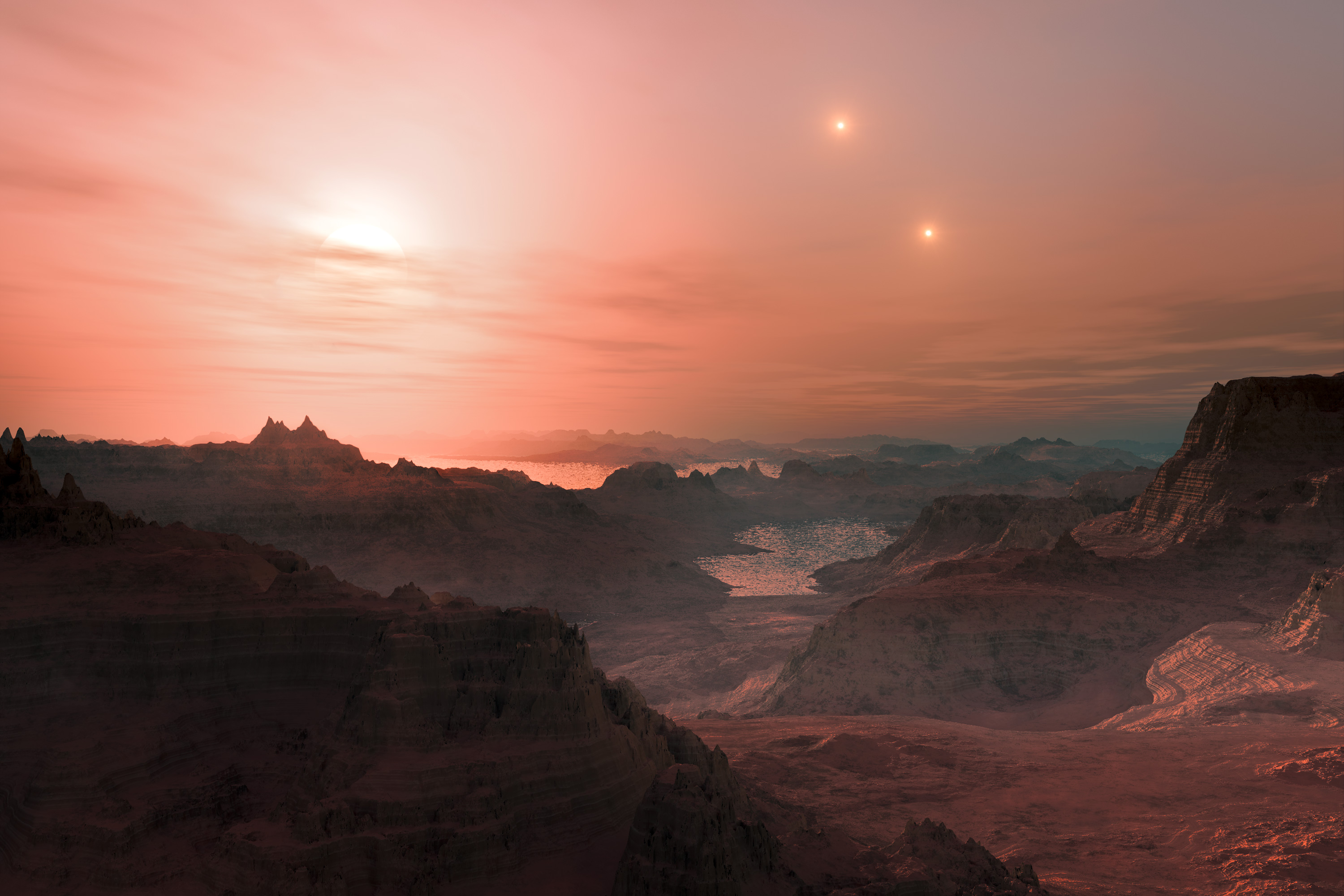- In the search for life beyond Earth, it is natural to start with planets and moons in our Solar System, since even the nearest neighboring star system is incredibly far away – literally light years away. Yet, while star systems in the universe are spread out extremely far from one another, they are practically countless in number. Even a tiny percentage of life-inhabited solar systems would therefore mean an enormous number; a universe rich in hugely spread-out life.
- While candidates beckon even within our Solar System (particularly moons of other planets), so do the stars at night … and their potential planets and moons.
- In this last regard, some such star systems do indeed include planets (known as exoplanets), and some of those planets are believed to host natural satellites, or moons (known as exomoons).
- Assessment, for potential habitability, of planets and moons in star systems beyond the Solar System, given their extreme remoteness, proves very challenging, yet equally intriguing.
- Since our only current “model” for a body known to harbor life is the Earth, the assessment of extra-solar system candidates for harboring life must, for now at least, be driven by our understanding and speculation based on what we know about life on Earth and its requirements.
- The topic of planetary and natural satellite habitability is a large one, with many relevant considerations on many levels, from the region of the galaxy where a star is found, to the characteristics of the particular star, to the likelihood of the presence of planets and moons in the star system, to the conditions likely to be present on such planets and moons.
- While there are many factors, some key ones boil down to an assessment of the presence, or likely presence, of stable liquid water, the availability of energy accessible for life, and likely presence or potential formation of organic compounds.
- Resources include: https://en.wikipedia.org/wiki/Planetary_habitability; https://en.wikipedia.org/wiki/Habitability_of_natural_satellites.

© 2015 Fosdick EDS ☾><(((°>
